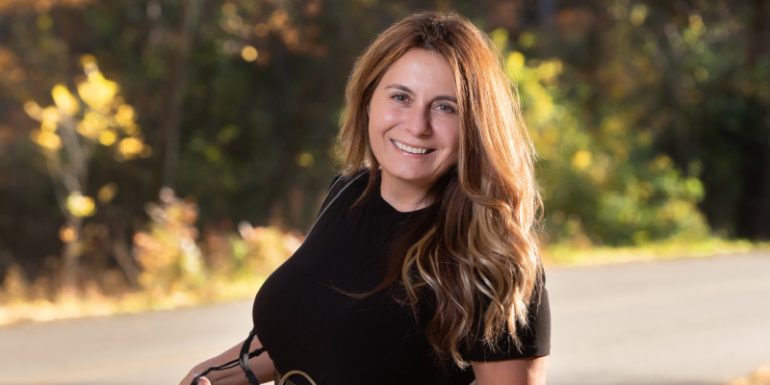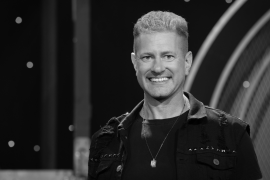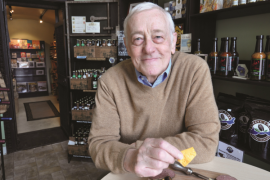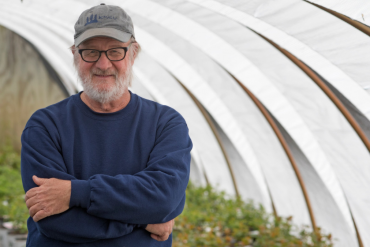By John Halverson
It’s a picture-perfect fall day and Megan Bearder is sitting on a park bench outside of the Lake Geneva Public Library, retracing her life and where it’s taken her.
Bearder, whose roots are in Lake Geneva, not far from that park bench, is now one of Chicago’s premier photographers with a business aptly named Megan Bearder Photography.
A camera is usually part of her uniform, but on this day, she is without one, taking in the view without distraction. As her website says, “When every moment matters” — a credo for her life as well as her business.
Her curious mind flutters with creative thoughts and she has an easy smile.
Bearder’s photos have appeared in The New York Times, Chicago Tribune, Chicago Magazine, Money magazine and Sports Illustrated. Her photo portfolio also includes work for Fortune 100 and 500 companies and numerous public relations firms, and she has a thriving wedding photography business.
“I remember as a kid always grabbing my mom’s little Kodak camera, with that spinning cube flash. That cube was really weird and fascinating,” she says, explaining how she fell in love with photography. “When I was 10, I strongly requested a real camera for Christmas. My mom was always disappointed that I unwrapped it Christmas morning while she. was in the kitchen.”
Bearder grew up in Geneva Bay Estates. Her grandparents owned the Lake Geneva Regional News and Bearder’s uncle ran it for years. “This is my hometown, and nobody can ever take that away from me,” she says, “I’m so proud that I come from Lake Geneva.”
She recalls Lake Geneva as a small town “where I knew everybody” that has grown into a much larger town with big box stores on the outskirts.
That interest in cameras with spinning cubes took a step closer to reality when she took a test in fifth grade designed to show her potential career interests. The test identified graphic arts and photography.
“I was blown away,” she says. “Out of the hundreds of occupations, those sounded like the best ones. That’s like getting to take an art class for a living and getting paid for it! It really felt right. Everything else sounded drab and painful, like something you have to do. Photographer, that sounded like something you get to be.”
AN EVER-EVOLVING CRAFT
Bearder’s father was a photographer, too. He once hid in the trunk of his car to take photos of Mafia members, she says.
When she was 15, Bearder recalls standing on the hood of her father’s Mercedes, at his behest, so she could get a better vantage point for a picture. On her website, she describes that “as my first major lesson in photography. Whatever the repair cost from the dents that day, it was far less than the value of the lesson” — which was to do whatever it takes to make a good picture.
“At that time, I didn’t know I could be a photographer. What I did know was that I wanted to make a beautiful picture,” she says. “I had thought it could take a lifetime to make one.”
Clearly, it didn’t take that long, but at first her photos were less than satisfying. “There was a learning curve of translating what I saw through the camera and how I photographed it,” she says. “Maybe that’s encouragement for those who love photography but don’t love their results. Keep seeing, keep photographing.”
Over the years her pictures started looking as fantastic as the scene or person she was photographing and now they’re often better as the examples on the next page and those on her website, meganbearderphotography. com, attest. Her underwater photography — “underwater muse” as she calls them — are especially striking. So are her more realistic photos — a father hugging his daughter at her wedding and exotic pictures taken in foreign lands.
She has a soft spot for veterans. She gets teary-eyed when she talks about making pictures of the last World War II prisoners-of-war survivors of the Bataan Death March. One of her goals is to take more portraits to memorialize them. “Their stories are important to know,” she says. “These men survived some of the cruelest circumstances imaginable. They are now in their late 90s and beyond. I’d like to make a difference for vets.”
“EVERYTHING WAS SO PHOTOGENIC”
Bearder went to college at Liberty University in Virginia and decided photography was her destiny. “I carried my camera with me all the time,” she says. “I was always creating scenarios for my friends to partake in and photographing just the things we did — studying at Krispy Kreme, friends talking at a table in the library, hanging out at the Waffle House. Everything felt significant and everything was so photogenic to me.”
Unlike most professional photographers, Bearder did not hone her skill in academia. “I never took a photography course until after I was a full-time, professional photographer,” she says. “I didn’t understand the value of a photography course when I was in college. I’d see those students photographing eggs and I thought that was the dumbest thing.”
In fact, she thought photography was something deeper than one could find in a class. “How can one be taught photography? It comes from inside — who someone is, what they think, what their values are,” she says. “I thought that! And hence I missed any opportunity to actually learn more technical things. Now I understand why they were photographing eggs!”
She found her way to Chicago while visiting a Lake Geneva friend during her college years. “I fell in love with Chicago in the winter,” she says, laughing at the seeming incongruity of the idea. “In fact, I wondered if Chicago even had anything going for it in the summer.”
An epiphany occurred when she was taking pictures of a friend while traipsing around Chicago, and they found themselves at the Adler Planetarium on Chicago’s lakefront. “My friend was all in white and I had asked her to bring a big piece of light white fabric or a scarf. I didn’t know what we would do with it but figured it could come in handy. I directed her to hold two corners and let the wind take the scarf. Bam! I felt the biggest rush of serendipity,” she says.
It was a moment she describes as “magic.” Bearder felt a “lightning strike of joy. I knew in that moment, and even said so out loud ‘this is what I wanted do.’ If I could do this all the time it would be so amazing. Isn’t that how one is supposed to pick a career?”
HER POLAROID DAYS
Her first job as a professional photographer wasn’t that enjoyable but taught her a valuable lesson. She explains she was staying with a friend in Chicago and had to find some way to support herself. “I went through the yellow pages looking for photographers and called them to see if they needed an assistant,” she says. “One did. But it was with a Polaroid camera selling pictures to couples in a night club.”
Her opinion of the job was less than glamorous. “It was horrible! I hated the scene,” she says, recalling how she went to the restroom and cried.
But the job taught her that she was good with people. She could walk up to someone, talk with them, and through that rapport they’d decide to have their picture taken and buy a copy.
“Being great with people I think, at least for everything I do in the realm of photography and life, is one of the most important keys for being a good photographer,” she says.
This characteristic has translated into text on one of her websites, where it says: “While the work is exciting, our passion is working with people. We do our best not just to create images of people, but to make them feel special, to make them look good and to make sure they have a great experience working with us!”
When asked what she does in her spare time away from her photography career, Bearder says with a smile, “Make pictures.” She also loves skating and plays ping-pong against anyone, including professionals. She also skis, boxes and plays hockey. “But I photograph all those, too,” she says.
MORE DREAMS AND AMBITIONS
“I would love to be doing more ‘A Day in the Life Of’ for families, athletes, musicians and honeymooners,” Bearder says. “Kids are growing every month and the silly or cute or amazing things they are doing at this moment will change. I like to pause time for people and this would be a beautiful and incredible gift to oneself and family to have these tiny and monumental moments that may be missed with the cell phone — to be permanent — printed for all time and cherished even more 5, 10 and 20 years from now.”
To learn more about Bearder and see galleries of her photos, check out her websites: meganbearderphotography.com; bearcoastmedia.com; and meganelizabethstudios.com.
MOMENTS IN TIME
This profile of Megan Bearder wouldn’t be complete without a sampling of her work, which is wide- ranging and diverse and displays her talent for capturing special moments in time. Whether it’s an editorial assignment, creating imagery for corporate clients or photographing a couple on their wedding day, her pictures are genuine, revealing true emotion and feeling.

This photo is one of many Bearder created for a New York Times story about
the first hockey game ever played in Chicago’s Soldier Field. “It was like being in a snow globe — they had to stop the game three times to clear the ice,” she says.
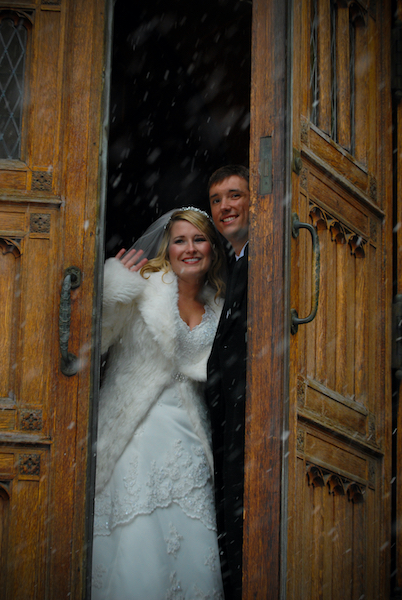
According to Bearder, this couple came from California to the Midwest in hopes of a snowy wedding day, but unfortunately there was no snow on the ground. She says, “Magically, during the ceremony, it started snowing and we were in an instant blizzard.” She adds, “Incredibly, I still made my flight that night to the next photo shoot in Morocco!”
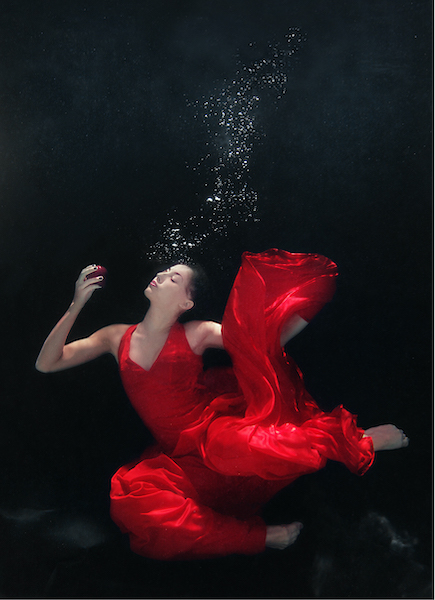
Bearder’s underwater portraits are made in a pool that’s 8 feet deep or in the ocean. Here, she says, “I was thinking Adam and Eve.” (Note the model is holding an apple.) She says she wore lead weights on her diving belt, wore a diver’s mask and held her breath as long as she and the model could.

Of this picture, Bearder says, “I’ve been making unique family portraits for well over a decade. I have photographed some families since their engagement through a third child … and counting.” For this particular photo, she explains, “I had to crop out two people that jumped into the icy November waters of Lake Michigan while we were photographing.”

